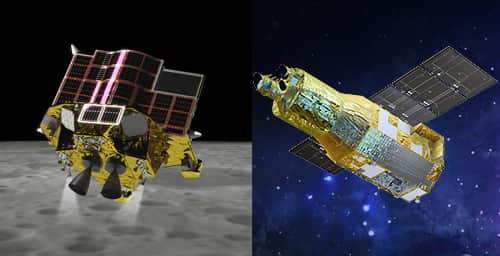Jaxa: what you need to know about the Japanese space agency - do they do human spaceflight?
and live on Freeview channel 276
The Japan Aerospace Exploration Agency (Jaxa) is the country's national air and space agency.
The organisation is the product of a merger of three previously independent agencies and was formed on 1 October 2003.
Advertisement
Hide AdAdvertisement
Hide AdThe space agency is battling to find its place in international space rankings but most recently successfully launched two missions into space.
So, who are Jaxa and what are they planning to do in space exploration? Here is what you need to know.


Who are Jaxa?
Jaxa is a product of three merged space organisations: Japan's Institute of Space and Astronautical Science (ISAS), the National Aerospace Laboratory of Japan (NAL), and the National Space Development Agency of Japan (NASDA).
The agency was formed as an Independent Administrative Institution administered by the Ministry of Education, Culture, Sports, Science and Technology (MEXT) and the Ministry of Internal Affairs and Communications (MIC).
Advertisement
Hide AdAdvertisement
Hide AdIts headquarters are in Chōfu, Tokyo, Japan, and its primary spaceport is the Tanegashima Space Center.
Jaxa has an annual budget of ¥212.4 billion.
As a breakdown, Jaxa is composed of the following organisations:
- Space Technology Directorate I
- Space Technology Directorate II
- Human Spaceflight Technology Directorate
- Research and Development Directorate
- Aeronautical Technology Directorate
- Institute of Space and Astronautical Science (ISAS)
- Space Exploration Innovation Hub Center
It has two communications ground stations for interplanetary spacecraft: the Usuda Deep Space Center and the Misasa Deep Space Station. These grounds allow Jaxa to work closely with other space agencies such as Nasa to support of respective deep space projects.
What are Jaxa working on?
Before the creation of Jaxa, ISAS was very successful in space program in the field of X-ray astronomy during the 1980s and 1990s - and their latest project, the Moon Sniper, is an echo of that.
Advertisement
Hide AdAdvertisement
Hide AdJapan's first space mission under JAXA, an H-IIA rocket launch on 29 November 2003, ended in failure due to stress problems. After a 15-month hiatus, Jaxa performed a successful launch of an H-IIA rocket from Tanegashima Space Center, placing a satellite into orbit on 26 February 2005.
In 2007, Jaxa successfully launched Kaguya, a lunar orbit explorer, which was the largest such mission since the Apollo program, on an H-2A rocket.
It was to gather information regarding the Moon's origin and evolution, but after a year of being in orbit, it impacted the lunar surface.
In its latest mission, Jaxa is reviewing a new spacecraft mission to the Martian system.
Advertisement
Hide AdAdvertisement
Hide AdFor human spaceflight missions, Japan has ten astronauts but has not yet developed its own crewed spacecraft and is not currently developing one officially. It aims to launch five projects next year, but Japan mainly focuses on robotic missions, to observe planets and the moon through various satellites, and telescopes.
Comment Guidelines
National World encourages reader discussion on our stories. User feedback, insights and back-and-forth exchanges add a rich layer of context to reporting. Please review our Community Guidelines before commenting.
